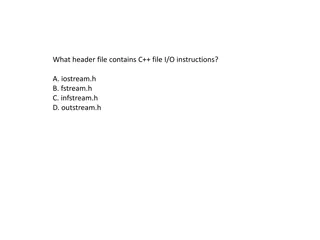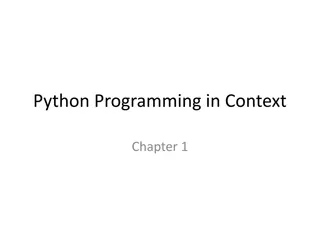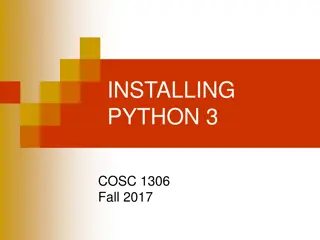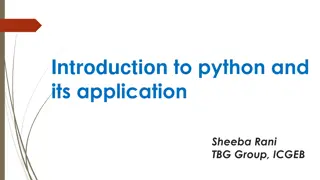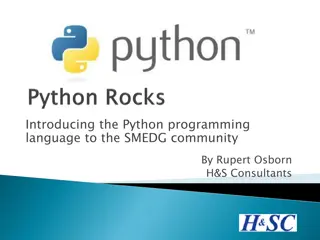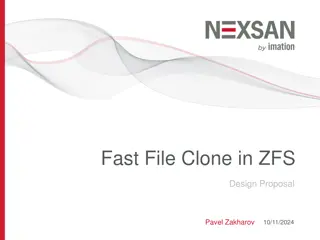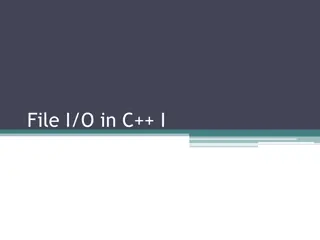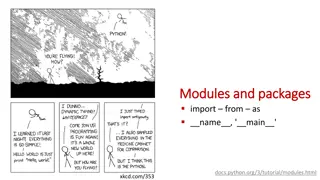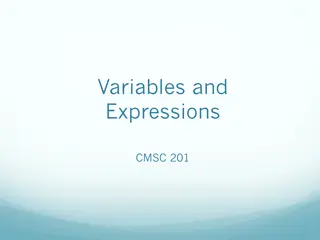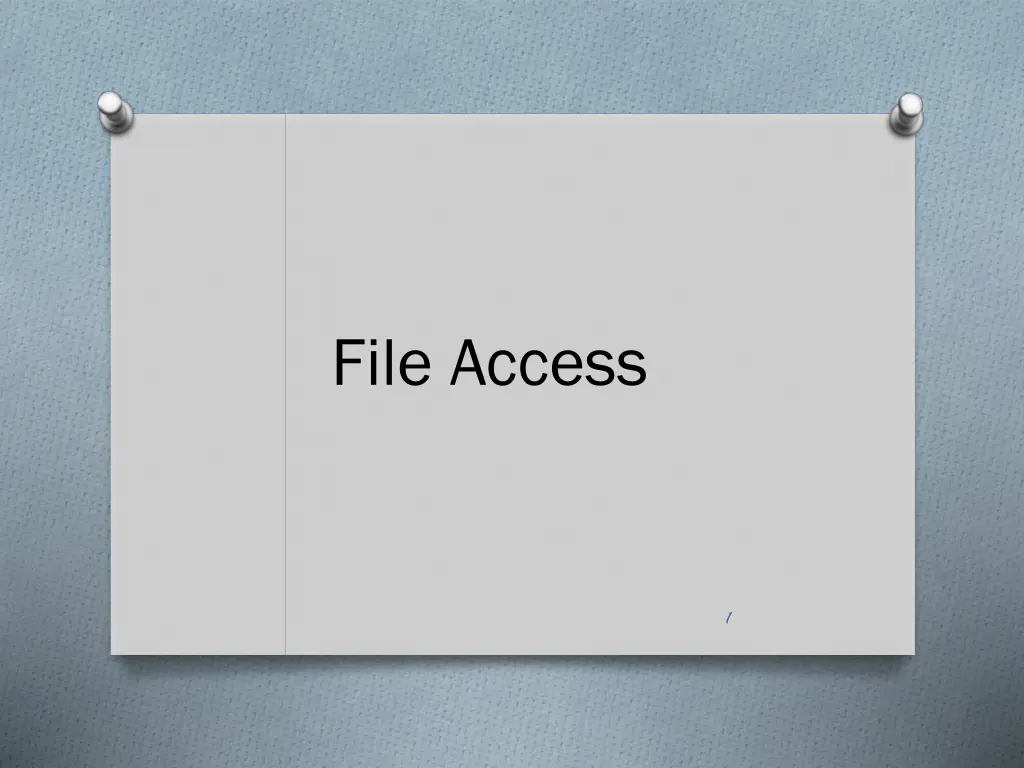
Understanding File Access and Operations
Learn about different file access modes, such as read, append, write, and create, along with how to open, read, and close files in Python. Explore examples for reading files line by line and creating new files using Python functions.
Download Presentation

Please find below an Image/Link to download the presentation.
The content on the website is provided AS IS for your information and personal use only. It may not be sold, licensed, or shared on other websites without obtaining consent from the author. If you encounter any issues during the download, it is possible that the publisher has removed the file from their server.
You are allowed to download the files provided on this website for personal or commercial use, subject to the condition that they are used lawfully. All files are the property of their respective owners.
The content on the website is provided AS IS for your information and personal use only. It may not be sold, licensed, or shared on other websites without obtaining consent from the author.
E N D
Presentation Transcript
Objectives O This chapter introduces: 1. Read a file Create a file 2. 2
Modes for opening a file "r : Read (Default value) Opens a file for reading, error if the file does not exist "a : Append Opens a file for appending, creates the file if it does not exist "w : Write Opens a file for writing, creates the file if it does not exist "x : Create Creates the specified file, returns an error if the file exists "t : Text Default value. Text mode "b": Binary Binary mode (e.g. images) 3
Read a file O Syntax: 1. Open and close: f = open("FILENAME", "MODE")#Open file #The default mode is reading the file f.close()#Close file Read a file: A. f.read()#Return the whole text B. f.readline() #Return one line that often has a \n appended at the end C. f.readlines() # Return all lines in the file, as a list where each line #is an item in the list object, and each line often has a \n appended D. for counter in file :# Read data (string) through the file line by line print(counter ) 2. 4
Read a file O E.g1: #Read a specified file name = input(" Please enter the file name: ") # UTF-8 encoded file = open(name, "r", encoding="UTF-8") print(file.read() ) # Read the data file.close()# Close the file O Result: 5
Read a file O E.g2: file = open( test.txt")#Open the specified file print(file.readline() )#Read a line file.close()#Close the file O Result: 6
Read a file O E.g3: file = open( test.txt")#Open the specified file # Read data (string) through the file line by line for counter in file : print(counter ) file.close()#Close file O Result: 7
Read a file O E.g4: array=[]#Define a list file = open( test.txt")#Open the specified file array=file.readlines() # Read data through the file line by line for counter in array : print(counter ) file.close()#Close file O Result: 8
Create a file O E.g: f1 = open("data.txt", "w") print(1,2,3,file = f1) f1.close() #data.txt is the name of the output file # w is the mode for opening the file O Result: 9
Create file O E.g: num1=20#Integer variable 1 num2=10 #Integer variable 2 print(num1+num2, file = open("num.txt", "w")) #num.txt is the name of the output file # w is the mode for opening the file O Result: 10
Remove a trailing newline of a string O The readlines() or readline() function will keep the newline character O Sometimes, we need to delete the newline symbol for the display O E.g : Output with extra newline symbol Expected output 11
Remove a trailing newline of a string O E.g: myfile = open("result.txt")#Read the file for line in myfile.readlines():#Read all data in the file #Delete the newline symbol and save it back line=line.strip("\n") print(line) myfile.close() The strip() method removes any leading (spaces at the beginning) and trailing (spaces at the end) characters (space is the default leading character to remove) O Result: 12
Read a file and Create a file O The following example O describes how to read the data, O put it in the list, O modify it according to the programmer s needs, O then save the data back to the file 13
Read a file and Create a file #--------------------------Read data-------------------------- file_in = open( test.txt")#Read the specified file arr=[]#Define a list for line in file_in.readlines():#Display all data in the file line=line.strip('\n')#Delete the newline arr.append(int(line))#Insert it at the end of the list print("Read data:") for line in range(0,len(arr)):#Display the data in the list print(arr[line]) file_in.close()#Close #--------------------------Insert data------------------------------- arr.append(100)# Insert 100 at the end of the list print("Information after insertion:") for line in range(0,len(arr)):#Display the data in the list print(arr[line]) #--------------------------Output data----------------------------- file_out = open( test.txt","w")#Create the specified file for line in range(0,len(arr)):#Write the data of the list to file print(arr[line],file=file_out) file_out.close()#Close O E.g: 14
Read a file and Create a file O Result: 1. Original file information: 2. Data after execution: 15
Source O References: O http://openhome.cc/Gossip/Python/IOABC.h tml O http://www.pythondoc.com/pythontutorial3/i ntroduction.html O http://pydoing.blogspot.tw/2011/01/python- operator.html O http://ithelp.ithome.com.tw/question/10161 708 O Python 16
Exercise 1 O Design a program that allows the user to repeatedly select 1 or 2, until -1 is inputted. O When 1 is selected, O Display all the data stored in the text file, where each data is paired by a number and a text O When 2 is selected, O Allow to update the text by a specific number
Example O Input: 1 2 1 Welcome to KUAS! O Result: 18
Exercise 2 O Design a program that will ask the user to enter the names of input file and output file, and then print the data, which are from the input file but whose lower case letters are changed to upper case letters, to the output file O Input: input file: abc.txt output file: xyz.txt Output:
Exercise 3 O Design a program that will ask the user to input an integer N, and then creates a file containing all the primes in the interval [0, N]. O Input: Output: N: 500






